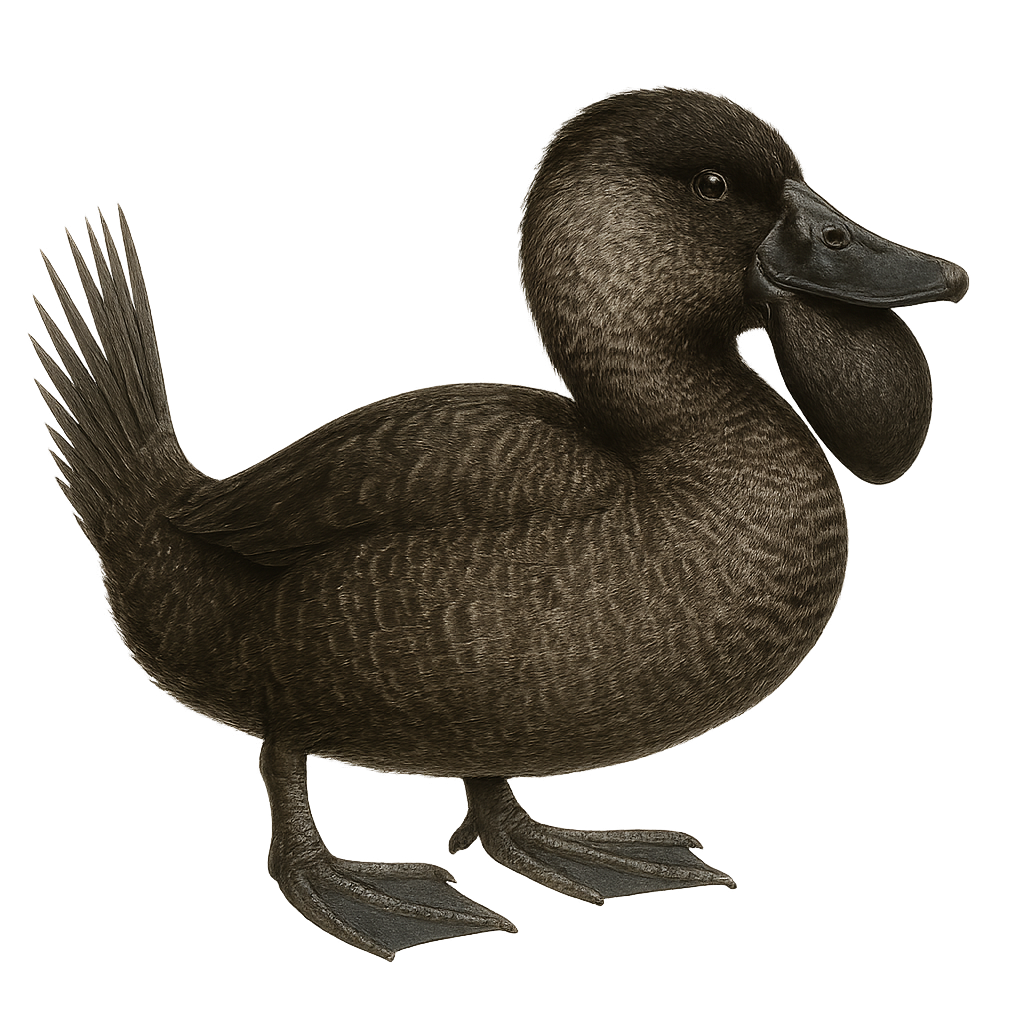Your wildlife photography guide.
Explore the musk duck in detail, study its behavior, prepare your shots.
Where to observe and photograph the musk duck in the wild
Learn where and when to spot the musk duck in the wild, how to identify the species based on distinctive features, and what natural environments it inhabits. The WildlifePhotographer app offers tailored photography tips that reflect the musk duck’s behavior, helping you capture better wildlife images. Explore the full species profile for key information including description, habitat, active periods, and approach techniques.
Musk Duck
Scientific name: Biziura lobata

IUCN Status: Least Concern
Family: ANATIDAE
Group: Birds
Sensitivity to human approach: Suspicious
Minimum approach distance: 10 m
Courtship display: August to November
Incubation: 34-38 jours
Hatchings: September to December
Habitat:
lakes, swamps, rivers
Activity period :
Primarily active during the day, with peak activity in the morning and late afternoon.
Identification and description:
The Musk Duck, Biziura lobata, is a diving duck native to Australia, known for its broad bill and stiff tail. Males display a lobed flap under the bill during courtship displays. This duck prefers large freshwater bodies like lakes and swamps, feeding mainly on mollusks, crustaceans, and aquatic insects. Although often solitary, it can be seen in small groups. Its ability to dive deeply and stay underwater for extended periods makes it an effective hunter. The species is currently classified as Least Concern by the IUCN but is sensitive to environmental changes and habitat degradation.
Recommended lens:
400mm – adjust based on distance, desired framing (portrait or habitat), and approach conditions.
Photography tips:
To photograph the Musk Duck, choose calm water bodies early in the morning to capture soft light. Use a telephoto lens of at least 400mm to get detailed images without disturbing the bird. Be patient and wait for the duck to approach naturally. Avoid sudden movements and use a tripod to stabilize your camera. Reflections on the water can add an artistic dimension to your photos, so experiment with different angles.
The WildlifePhotographer App is coming soon!
Be the first to explore the best nature spots, track rutting seasons, log your observations, and observe more wildlife.
Already 1 439 wildlife lovers subscribed worldwide

